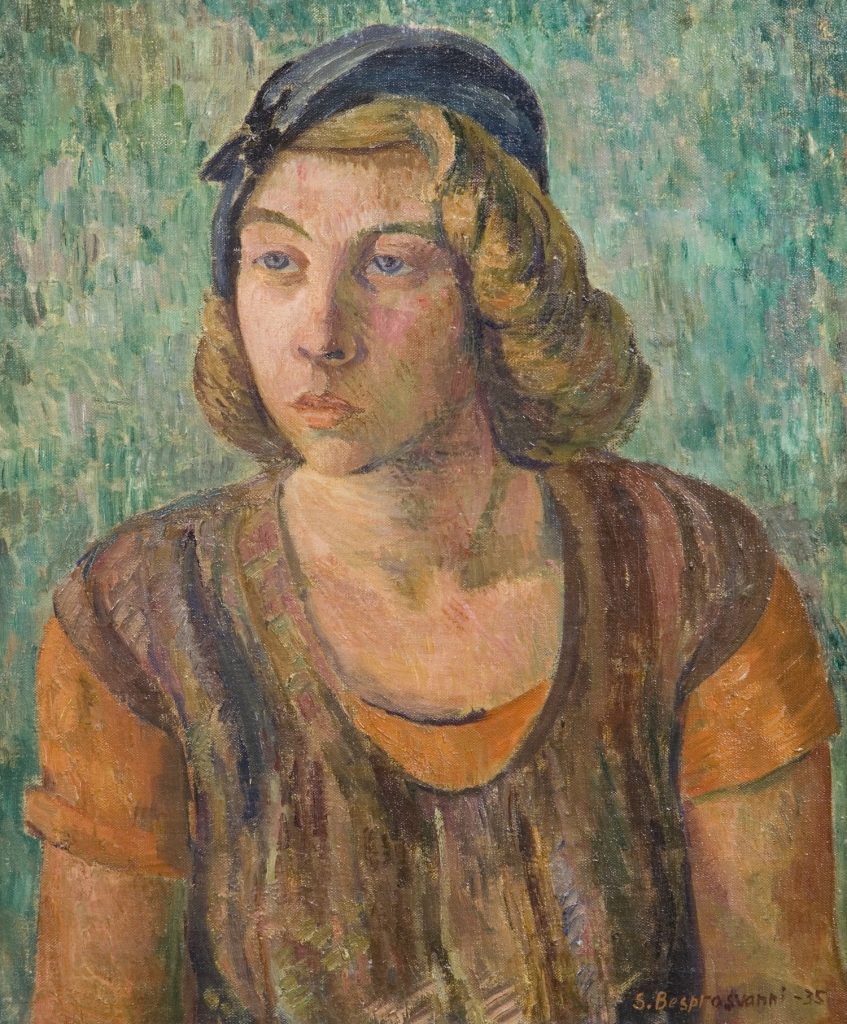Portrait of Tove Jansson, 1935
JUNE 2018
Fair-haired, young woman dressed in brown skirt, orange shirt with short sleeves and a 1930s fashion hit, a skull cap that matches her eyes. Intensive eyebrows, round lips and fair, hair curled inwards at the ends frame soft the features of her face. The woman has no jewellery on her ears or round her neck.
The woman in the portrait is 21-year old Tove Jansson (1914–2001), who nowadays is famous round the world as admired and appreciated cartoonist and creator of the Moomins. The portrait has been signed by S. Besprosvanni -35. In 1935, Tove was an art student who had still one year left in the drawing school Artists’ Association of Finland. Later on, she complemented her studies in Helsinki in the new Free Art School that favoured the French colourist painting.
Since 1941, Samuel Besprosvanni is known in Finnish art history by the name Sam Vanni (1908–1992). He was a Viborg-born son of a milliner and fur vendor, who had at a young age become ill with tuberculosis. Some help was sought for him from abroad because of the disease in his leg. During these trips, Vanni became acquainted with contemporary art of his time, which later on would prove to be decisive on his career as an artist.
Vanni painted several portraits of his friend Tove Jansson. The work included in the Gösta Serlachius Fine Arts Foundation’s collections and completed in 1935, is probably the one whose working title was ”portrait in overhead light”. In the painting the light comes diagonally from above on the model.
In the artist circles of Helsinki, Vanni was recognised as revisionist of art. This is why Tove’s father Viktor Jansson suggested that the daughter would apply for Vanni’s private classes. This also occurred but the father did not know that the daughter and her future teacher had been having an affair. Patriotic father-Jansson was pro-German and ideologically anti-Semitist, so Vanni, being a Jew, was not welcomed as daughter’s gentleman friend. In time, Vanni and Tove’s relationship changed into friendship, which lasted thought their whole lives. Later Tove Jansson has said that ” more than anyone else, Sam Vanni taught me the essential things about painting”.
In the 1930’s, Vanni had already developed his own coloristic painting towards the direction that totally deviated from the general greyness of the Finnish contemporary art of his time and its conservative way of using colour. Instead of the motif of an artwork, the French painting with the so-called palette of pure colours emphasized artwork’s texture, composition and colour. A teacher in the Free Art School and later in the Finnish Art Academy, Vanni passed on the doctrines of the new colourist theory to the younger artist generations. It was only after the Second World War that the totally abstract colourist painting actually came to Finland.
Sam Vanni was also a renowned and appreciated portrait painter. For him colour was an independent means of expression in painting. The colours in Tove Jansson’s early portrait were something new in its own time. The painting is clearly structured so that the composition is based on two colours, orange and green.
Marjo-Riitta Simpanen
Art historian, Curator


